The conversations we have about this hobby shape our view of it for better and for worse. It’s always interesting to learn about the journey other modelers have taken, so I asked Trevor Marshall if he would share a portion of his. Trevor and I have been friends for several years corresponding first by e-mail, then meeting in person at the O scale March Meet in Chicago. When I was editor of O Scale Trains Magazine, I encouraged him in his efforts to start The Model Railway Show podcast and OST, the magazine, became one of the first sponsors of the show. I’ve also been a guest on the show twice. Now that the transparency/disclosure stuff is out of the way, here’s my interview with Trevor. My questions are in italics.
People who have followed your work in magazines like RMC and more recently online via your blog know that you have a wide range of modeling interests. How has that impacted the hobby for you?
Well, on the one hand it means I have a pretty amazing Cabinet of Layouts Past, holding a diverse collection of locomotives and rolling stock in an embarrassing variety of scales and gauges. It also means my library shelves are groaning under my railway books, which I no longer count but measure by the yard.
But this is actually pretty positive. I find that because I’ve worked in so many scales, gauges, prototypes and eras – everything from HO narrow gauge to 1/12 scale live steam – I can appreciate just about anything someone else is doing in the hobby, providing they’re passionate about their subject and working to improve their hobby skills in the process. I think it’s one of the reasons I enjoy co-hosting The Model Railway Show podcast – Jim Martin and I have covered a broad range of topics and I find them all interesting. About the only thing I do not like in the hobby is lazy modeling – those who rely too much on the “good enough” rule.
What have you learned as a result, about the hobby, about yourself?
What I’ve learned about the hobby is there are a surprising number of enthusiasts who cannot appreciate work being done outside their narrowly focused interest. That’s too bad, because I think they’re missing a great opportunity. Almost every well-done layout I’ve experienced and every well-executed model I’ve viewed has taught me something – directly or indirectly – that I can bring to my own hobby.
What I’ve learned about myself is that if I haven’t touched a layout in a year, I probably never will again. The first time I realized that, and I tore out a layout, it was awful. Even two layouts ago, I had to invite two friends over and have them swing the first blow. But now if that happens, I know that I will be happier if I clear the space and start fresh. I also know that the value of models is not in their price-tag, but in the building and enjoyment of them.
You’ve worked in both standard and narrow gauge themes. Do you have a preference between the two?
Nope – I love them both, for different reasons. While fans of the D&RGW might argue the point, to me standard gauge railroading tends to have more of a sense of urgency and purpose – even on a marginal line such as the Canadian National Railway’s Port Rowan branch, which is what I currently model. Civil engineering around a standard gauge railroad tends to the substantial – with greater use of brick, stone and steel than on narrow gauge lines.
But narrow gauge has real charm. I’ve modeled lines based on the Maine two-footers, and my live steam equipment is all of 2’, 30” or 3’ gauge British prototypes. And all of it is funky in a way that standard gauge models never are. My prototypes have also involved a lot more wooden construction, in buildings and rolling stock. I find wooden prototypes easiest to scratch build. In fact, scratch building a Maine two-foot boxcar is easier than kit bashing.
You’ve worked in 1:87, 1:48 and now 1:64. What has working in different scales taught you?
Each scale has its strengths and challenges, and it’s important to understand those and how they relate to what the modeler wants to do in the hobby. This goes beyond “Everything’s available in HO” and “O scale has presence.” It relates to prototype, theme, room space, time, money, what one wants to accomplish in the hobby, the need for challenges, and so on.
It also relates to the social aspect of the hobby. Since I live in southern Ontario, modeling a Maine two-footer in O scale was a pretty lonely exercise. Most of the O scale narrow gauge fans I know in this area model the Colorado three-foot lines or freelance in On30. And displaying Maine two-foot equipment at local meets drew confused stares, as if I’d shown up with Thomas the Tank Engine. Now that I’m modeling a local railway, more people can relate. And there’s a surprisingly large local group of very talented people working in S scale, so I have stronger friendships in the hobby now.
What do you look for in choosing a theme to model?
A strong story – one that I’m not seeing told by many others, and one that’s going to provide me with modeling challenges.
Currently, that story is about the twilight of a branch line in Southern Ontario at the end of the steam era. The challenge is to make the layout entertaining while conveying the sense that there used to be a lot more going on. Telling the story has meant figuring out how to distress each tie and plant fairly thick grass between the ties, while still allowing the models to pass reliably. And it’s meant I’ve had to leave plenty of space around the track at the terminal in Port Rowan to convey the sense of a line ending in a meadow.
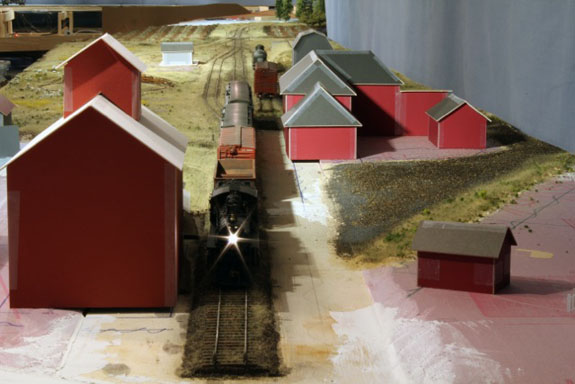
End of track at Port Rowan, with the feed mill (left) and station (right rear) in the form of temporary cardboard mockups. Notice how open and generous the sense of space in the scene is, conveying the isolated nature of the end of this Canadian National branch line.
My On2 layout told the story of quarrying and finishing slate, which was the lifeblood of the Monson Railroad in northern Maine (photo below). The challenge was to build steam derricks and cranes, mill buildings, and slate finishing equipment, and pull together the story of the relationship between the mill and the railroad.
Because my layout spaces have always been relatively modest – at least compared to some of the monsters that appear in the popular hobby press – I’ve gravitated towards themes featuring small steam power. But there are other interesting stories that I’d like to explore sometime. For example, my Cabinet of Layouts Past includes some HO scale CNR switch engines from the late 1980s, which Pierre Oliver and I used on a large, Free-mo compliant exhibition layout a few years ago. Some day, I’d like to build a layout exploring the relationship between the railroad and the automobile, and they’ll be perfect. In fact, I have a storage tub full of auto racks and high cube boxcars for the day I get to build the auto plant.
Planning/designing a layout is as unique a process as the individual(s) doing it. In spite of many years of publications such as Model Railroad Planning and countless books and magazine articles, to many people, especially beginners, the process seems as shrouded in mystery as ever. I like the idea of telling a story with a layout; a concept I feel has a lot of merit. Do you think we’ve become stuck in the types of stories we tell with regard to what a layout could be? I’m thinking in not only terms of the physical design but the foundational concepts, like the time worn themes of main line, branch line, switching and so on?
On the one hand, those themes are time-worn for a good reason: they reflect the work that real railroads do. But I think hobbyists often miss out on opportunities when executing these themes.
For example, Allen McClelland’s Virginian & Ohio introduced many hobbyists to the concept of staging to represent the rail system beyond what’s modeled on the layout. Tony Koester then popularized the concept through his writings about his Allegheny Midland. The V&O and AM were landmark layouts for many reasons. But in a way it’s unfortunate that they were both freelanced Appalachian coal-haulers, because for years afterwards the magazines featured freelanced Appalachian coal-hauling layouts. And many of them were not nearly as inspiring – and I think that’s because the modeler hadn’t written their own story in plywood and plaster: They’d copied someone else’s.
The coal-hauling layout theme didn’t really improve until the Railroad Prototype Modeler movement introduced the idea of celebrating the differences between the locomotives and rolling stock of different railroads. As hobbyists learned to appreciate and model these differences, and then started building layouts for their equipment, they applied the same research and attention to detail to a railroad’s physical plant – to the stations, freight houses, bridges, signal systems and so on – as well as to the environment through which these railroads ran. The best examples of coal hauling layouts, to my mind, are the ones that scream “L&N” or “Clinchfield” or “Virginian” – not only in their appearance, but also in their style of operations. Capturing a particular railroad’s culture is perhaps the most difficult aspect, but it can be done.
The same issues occur with other themes, of course. Beyond this, you’re right – the time-worn themes of “main line”, “branch line” and “switching” are good concepts, but not the only concepts. Thanks to writers like Lance Mindheim, we’re seeing more interest in layouts set entirely in industrial parks. Lance’s interpretation of this concept involves the CSX in Florida – which is very different, both visually and operationally, than a layout based on the Modesto & Empire Traction Co – an industrial park railroad in California. There are other concepts worthy of more exploration, including layouts based on rail-marine themes (such as the Bronx Terminal), layouts based on remote prototypes (such as the Cartier Railway, the Alaska Railroad, the White Pass & Yukon, and the Newfoundland Railway), layouts based on railways serving in wartime situations (such as the Oahu Railway and Land Co., which transported troops, munitions and more around Honolulu and Pearl Harbor during World War II), layouts based on commuter train operations, layouts based on serving a single industry (an auto plant, a steel mill) and so on.
There are also interesting design concepts to explore – such as building two or more un-connected decks and tying them together through operation. I did not have the headroom when I was modeling my Maine two-footer in O scale, or I would have explored that idea. I could have put the On2 on one deck, and an HO scale, standard gauge Bangor & Aroostook railroad line on the other deck. To tie them together, I would’ve modeled the transfer yard on both decks. Such a layout would’ve played to the strengths and mitigated the weaknesses of each scale/gauge combination.
For narrow gauge fans, the transfer yard offers an interesting operation concept. It takes two or three narrow gauge boxcars to fill one standard gauge boxcar – and it takes time to transfer that material. So, how about creating a set of cards to represent workers transferring cargoes, a guide outlining how much time a worker needs to do a specific task (as well as whether assigning additional workers can reduce that time), and then set timers and work the yard knowing that cars can’t be moved while they’re being worked? It’s much more interesting than simply spotting the narrow gauge cars next to the standard gauge ones and calling it a day, and it would help tell the story of the narrow gauge railroad being modeled.
There are also interesting operational concepts that have not been thoroughly explored. I once attended an operating session on a layout set in the 19th Century, that used telegraph keys and sounders for train control. Cheat sheets at each station helped train crews report their arrival to the dispatcher and interpret their orders. It was great and by the end of my first session I was comfortable using the keys. And telegraphs were used into the 1950s, on lightly trafficked lines at least. But I’ve only ever seen that done on one layout.
I’ve mentioned the auto plant already and I think it’s a tremendous theme for a layout. There’s a variety of traffic, a lot of switching, and it all has to be done to the clock – because of the industry’s Just In Time practices and for safety reasons. Plant switching is carefully coordinated around shift changes and cars must be spotted in specific orders.
I could go on…
How do you go about the planning process?
I start by looking at what the prototype did. (This works for freelanced railroads too – because a good freelanced railroad will also be plausible, which means there’s probably a suitable prototype for inspiration.)
I look for track maps and inspiring photographs, then figure out whether those track arrangements or scenes will fit the layout space. This involves stacks of graph paper and yards of pencil lead, because I don’t like to plan layouts using software.
I always try to work staging into a plan, too. It’s important for trains to go somewhere beyond the layout. For the themes I favor, with short trains, the hobbyists in Britain have really pushed the boundaries of what’s possible, using sector plates, train-length turntables, fiddle yards, cassettes, train elevators, and other creative alternatives to a conventional staging yard.
Your current project is a prototype-based theme set in the 1950s that follows a Canadian National branchline. How did the planning exercises differ from the S&PC On2 layout?
While the scales, gauges, eras and locations are different, the themes are similar – the Port Rowan branch is about as close as one can get to narrow gauge railroading while still having 4’-8.5” between the rails. And the S scale layout is in the space previously occupied by the On2 layout. So the planning process was pretty similar. I’ve followed roughly the same outline for the benchwork and the track standards (curve radii, frog size, etc.) are similar.
I also followed a similar planning process, of looking at prototype photos and track arrangements and playing around with ideas on graph paper to figure out what would fit.
The big difference was the role equipment played in the design process.
The two-foot gauge Somerset & Piscataquis Counties RR was freelanced – although strongly influenced by the Monson Railroad. So I didn’t worry about the availability of equipment to run on it. I had a locomotive and caboose, and knew I’d be scratch building many of the freight cars.
By contrast, my S scale layout would need CNR-specific equipment – including steam engines, cabooses and passenger and freight cars. So during the design process, I looked at books and other information on CNR branch lines to determine what equipment I would need. I then determined whether that equipment existed in S scale, and whether I could obtain it. That would determine what branch I would try to design for my space.
For example, a mixed train served the Port Rowan branch. It included a combine and a baggage-mail car. Andrew Malette at MLW Services made a combine kit a few years ago, but it was a limited run and no longer available. I found two un-built kits on the used market and acquired them. I found a ready to run model of an RPO from American Models that could be detailed to represent one class of CNR baggage-mail cars. Therefore, I could do the mixed train, which made Port Rowan a viable option. If I hadn’t been able to find those passenger cars, I would’ve done a different branch – one that was freight only.
The S&PC layout was built with lightweight modular construction as a precaution against a possible move, yet the Port Rowan layout uses conventional benchwork. Why that choice this time?
Given the choice, permanent beats portable for solid construction and ease of construction. When I built the S&PCRR, there was a strong possibility of a move in our future. Eight years later, when starting the CNR Port Rowan branch, a move seemed a lot less likely.
As well, when I started the S&PCRR, it was at one end of our basement. A couple of years later, I moved the layout to the opposite end. And it didn’t fit the space very well. That’s a problem with layouts designed to move: They only really fit in the space they were designed for. Given that my space is modest for an S scale layout, I wanted to make the best use of the space I could, which meant fitting it to the room. At that point, building it in a permanent fashion seemed the best approach.
You are a professional writer by trade. Where and how does blogging about your modeling efforts fit into the hobby?
For me, blogging serves three purposes.
First, it’s a way to share my progress with friends and other interested people. Some of those interested people have become friends in the process.
Second, it’s a research tool. Through the blog, I’ve met people who grew up in the Port Rowan area in the 1950s and remember the steam trains on the branch. They’ve shared some great information with me – answering questions I’ve had about structures, railroad customers, and more.
Third, it’s a record of what I did. As I get older, I find I can no longer remember things like what brand of static grass I used, or what detail parts I installed on the baggage-mail car. But that information is all on the blog.
Final question: Digital technology has impacted the hobby for almost twenty years in the form of DCC. But it’s much more than just tech stuff that changes how we operate. Blogs, podcasts, forums, and other digital communication forms have erased geographic barriers and made the most obscure nuggets of info easier to find. What do you see happening to the hobby with the digital revolution and all its implications?
I do think it’ll change the way we get information and share information. For one thing, that’s good news for those are interested in less popular prototypes.
I think if one looks at the Railroad Prototype Modelers movement and its effect on the hobby, one can appreciate the kind of effect digital is having. Before the RPM movement, manufacturers tended to offer factory-painted models for the top railroads: Pennsylvania, New York Central, Southern Pacific, Union Pacific and Santa Fe. And other than the paint, those models were identical. But thanks in large part to the RPM movement, today’s offerings are factory detailed to match specific roads, and offered in a tremendous variety of paint schemes. That, in turn, has encouraged people to model some of the secondary railroads – the regionals, the spinoffs, the branchlines – to a high degree of accuracy.
The difference is, Railroad Prototype Modelers had the knowledge to make those locomotive and rolling stock variations possible, and demanded those variations from the manufacturers. And they accomplished this before the widespread adoption of email, newsgroups and photo-sharing sites.
Today, we have all of that, plus digitized archives of community history, libraries of structure photographs and plans, online catalogues of clothing styles, and more. I hope that will make it easier for people to build accurate models and prototype-based layouts.
Photographs by Mairi MacDonald and Trevor Marshall
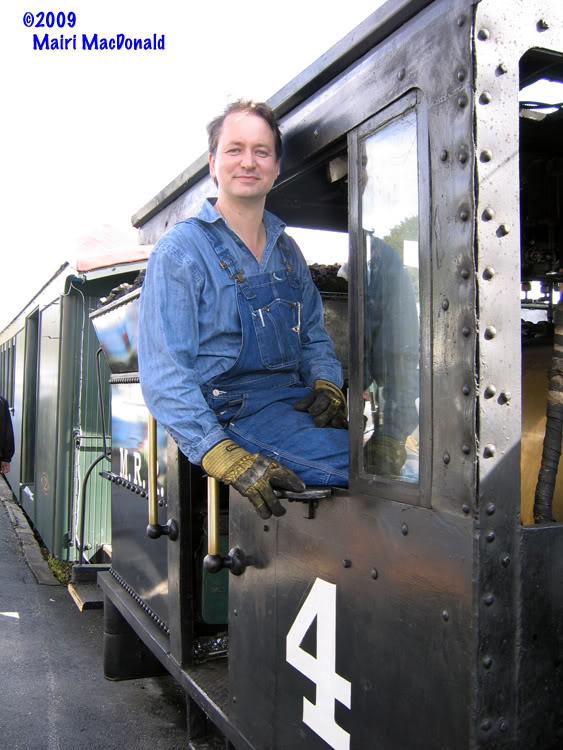
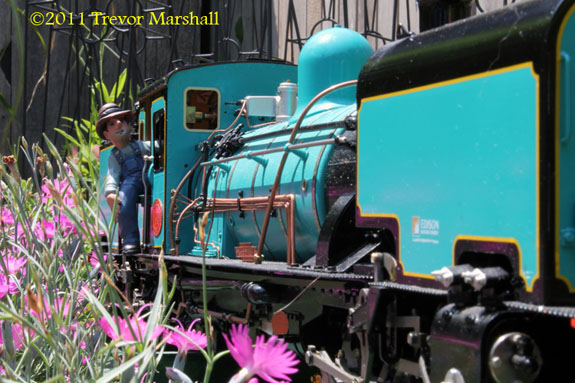
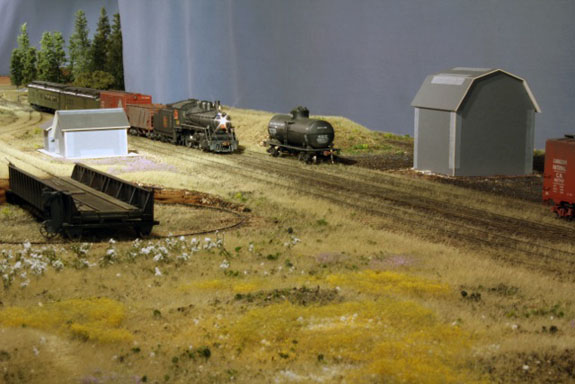
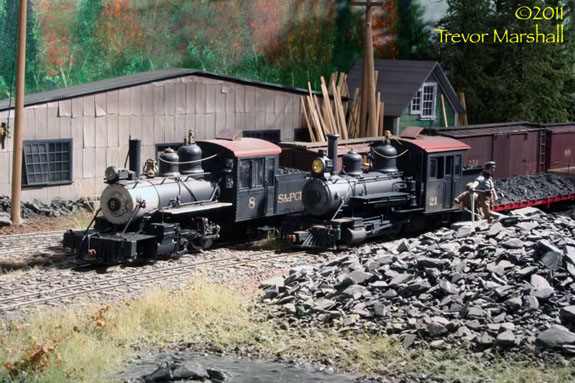
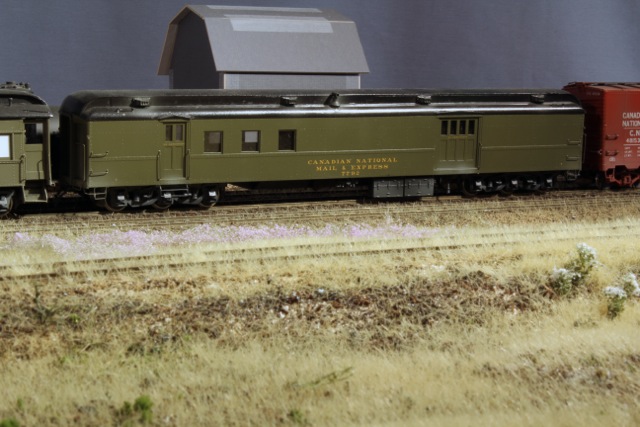
You have good, articulate thoughts about the hobby and it was a pleasure to share them in this space.
Regards,
Mike